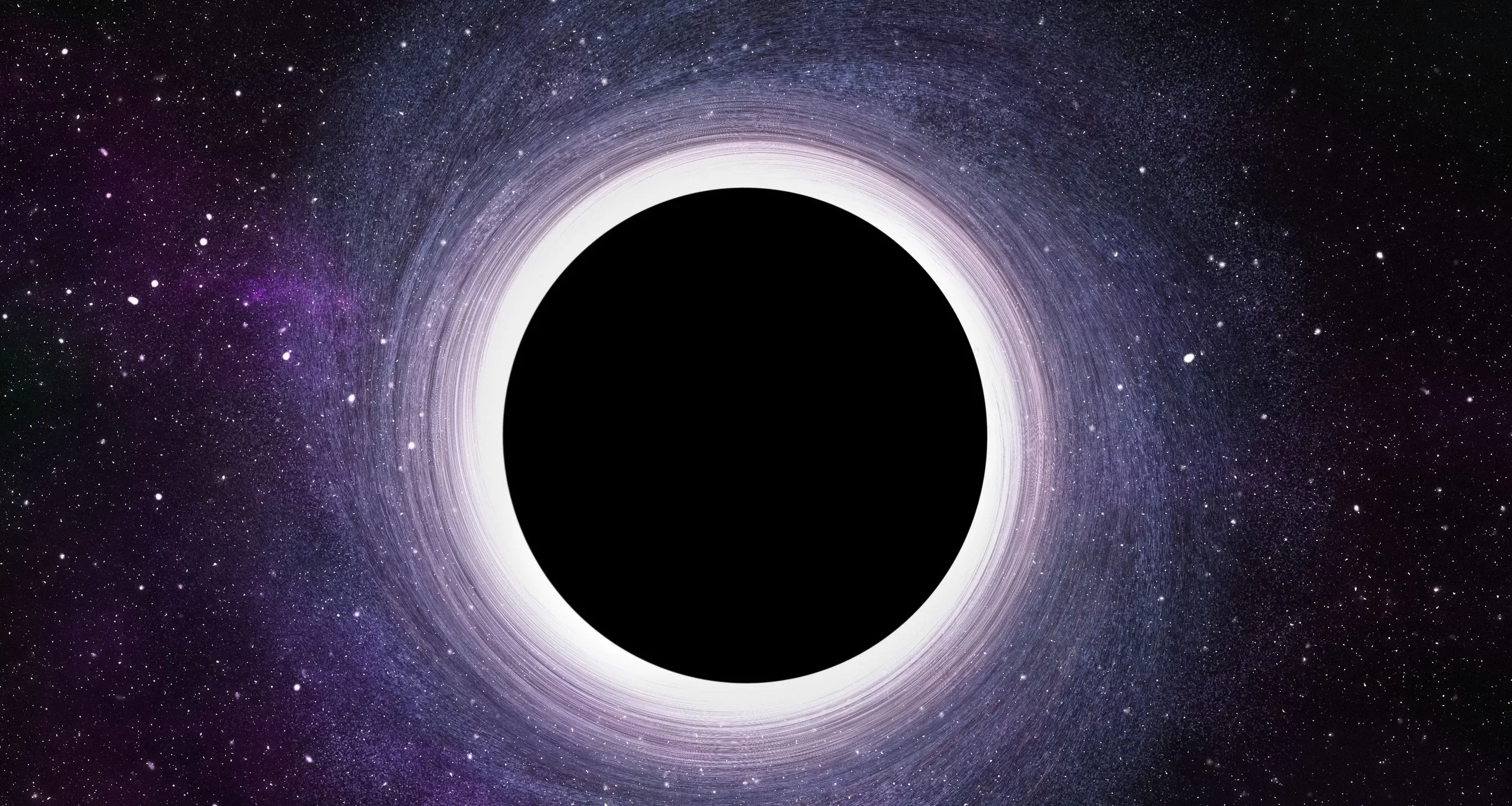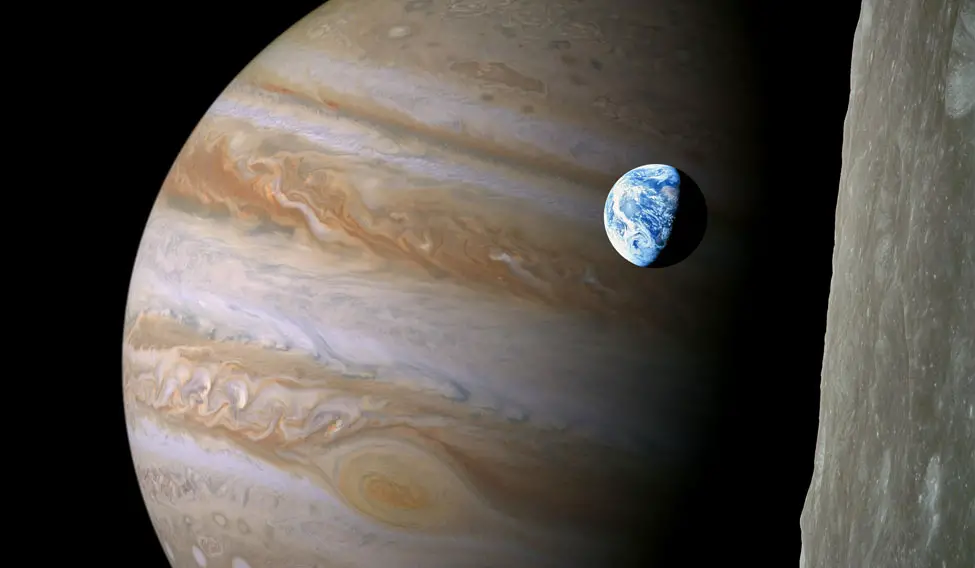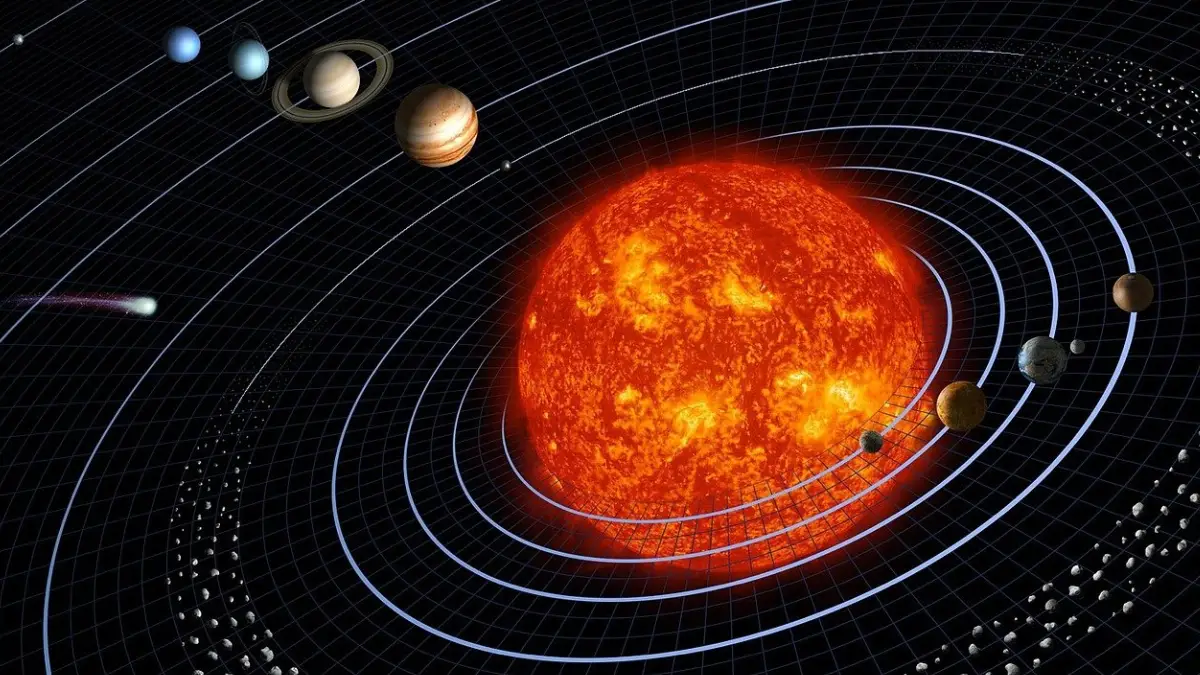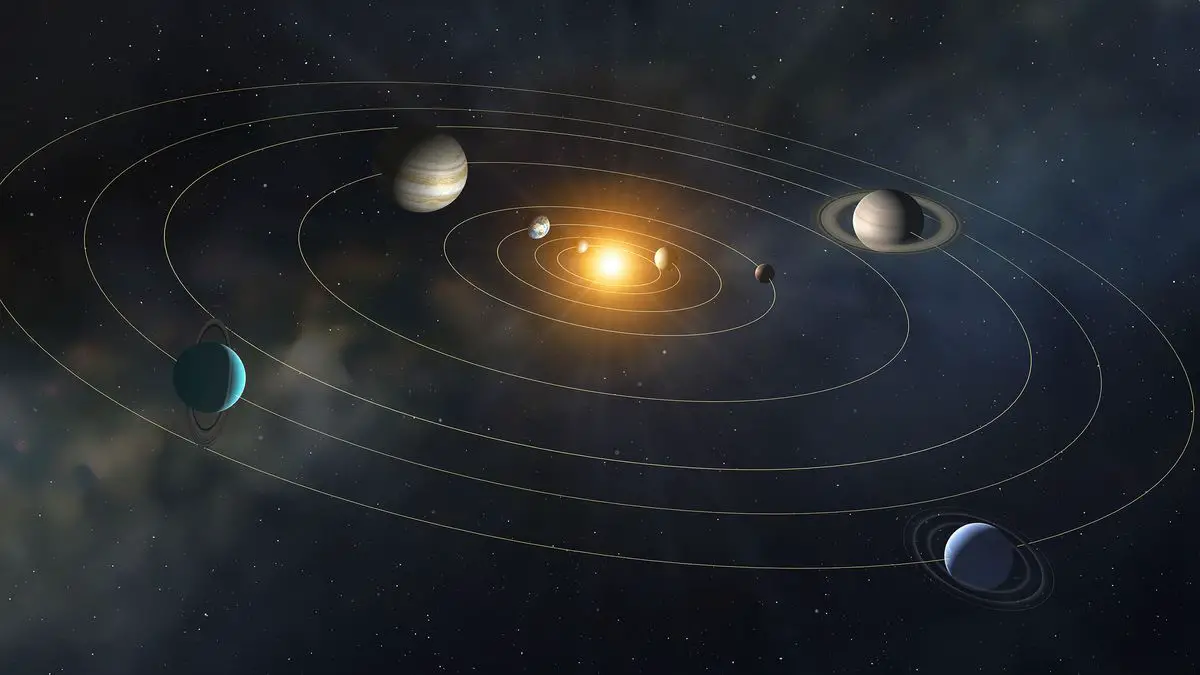This theory treads a fine line to help explain dark matter.
TL;DR
MIT researchers have revisited Stephen Hawking’s theory that primordial black holes formed just after the big bang could account for dark matter. They propose that these black holes originated within the first quintillionth of a second after the big bang, absorbing free quarks and gluons, unlike typical black holes formed from collapsing stars. This process would result in black holes with unique properties, such as color charge, setting them apart from those observed today. If these tiny black holes survived early cosmic history, they might leave detectable traces in the balance of protons and neutrons or through gravitational wave signals.
After reading the article, a Reddit user Jane gained more than 126 upvotes with this comment: “The theory says some of the dark matter phenomena might be explained by primordial, small-mass (about the mass of an asteroid), black holes made up of quarks and gluons that formed a quintillionth of a second after the big bang. Super interesting! Finding a new type of black hole would be amazing. The scientists are hoping that the next generation of gravitational wave detectors will be able to get us some clues.” Feel free to dive into the comments and join the discussion below!
______________________________
For about half a century, scientists have been dealing with a major issue: there isn’t enough visible matter in the universe.
All the observable matter — stars, planets, cosmic dust, and everything else — falls short in explaining why the universe behaves the way it does. According to NASA, there must be five times more matter to match researchers’ observations. This missing matter is referred to as dark matter because it doesn’t interact with light and is therefore invisible.
In the 1970s, American astronomers Vera Rubin and W. Kent Ford confirmed dark matter’s presence by observing stars at the edges of spiral galaxies. They found that these stars were moving too fast for the visible matter and gravity of the galaxy to hold them together — they should have been flying apart. The only plausible explanation was a large amount of unseen matter keeping the galaxy intact.
“What you see in a spiral galaxy,” Rubin remarked at the time, “is not what you get.” Her work built on a hypothesis from the 1930s by Swiss astronomer Fritz Zwicky and sparked a hunt for this elusive substance.
Since then, scientists have been trying to directly observe dark matter, even building large detectors for this purpose, but so far, without success.
Early in the search, famed British physicist Stephen Hawking theorized that dark matter might be hiding in black holes, a primary focus of his research, formed during the big bang.

Bettmann Archive/Getty Images
Now, a new study by researchers at the Massachusetts Institute of Technology has revived this theory, exploring what these primordial black holes were made of and potentially discovering a new kind of exotic black hole.
“It was really a wonderful surprise that way,” said David Kaiser, one of the study’s authors.
“We were making use of Stephen Hawking’s famous calculations about black holes, especially his important result about the radiation that black holes emit,” Kaiser said. “These exotic black holes emerge from trying to address the dark matter problem — they are a byproduct of explaining dark matter.”
The first quintillionth of a second
Scientists have proposed various ideas about what dark matter could be, from unknown particles to extra dimensions. However, Hawking’s black hole theory has only recently gained attention.
“People didn’t really take it seriously until maybe 10 years ago,” said study coauthor Elba Alonso-Monsalve, an MIT graduate student. “And that’s because black holes once seemed really elusive — in the early 20th century, people thought they were just a mathematical fun fact, nothing physical.”
Today, we know that nearly every galaxy hosts a black hole at its center, and the 2015 discovery of gravitational waves created by colliding black holes — a major milestone — confirmed that black holes are ubiquitous.
“Actually, the universe is teeming with black holes,” Alonso-Monsalve said. “But the dark matter particle has not been found, even though people looked in all the places where they expected to find it. This is not to say dark matter is not a particle, or that it’s for sure black holes. It could be a combination of both. But now, black holes as candidates for dark matter are taken much more seriously.”
Other studies have validated Hawking’s hypothesis, but the work of Alonso-Monsalve and Kaiser, a professor of physics and the Germeshausen Professor of the History of Science at MIT, delves deeper into the formation of primordial black holes.
The study, published in the journal Physical Review Letters, suggests that these black holes formed within the first quintillionth of a second after the big bang: “That is really early, and a lot earlier than the moment when protons and neutrons, the particles everything is made of, were formed,” Alonso-Monsalve said.
In our everyday experience, protons and neutrons are not typically found apart; they behave as elementary particles. Yet, we know they are composed of smaller particles called quarks, which are held together by particles known as gluons.
“You cannot find quarks and gluons alone and free in the universe now, because it is too cold,” Alonso-Monsalve added. “But early in the big bang, when it was very hot, they could be found alone and free. So the primordial black holes formed by absorbing free quarks and gluons.”
This formation process would make these black holes fundamentally different from those usually observed, which are born from collapsing stars. Additionally, a primordial black hole would be much smaller — approximately the mass of an asteroid condensed into the volume of a single atom. If enough of these primordial black holes survived the early big bang without evaporating, they could explain most or all of dark matter.
A long-lasting signature
According to the study, another type of previously unobserved black hole would have formed alongside the primordial black holes. These would have been even smaller — around the mass of a rhino, condensed into less than the volume of a single proton.
Due to their small size, these tiny black holes would have been able to acquire a rare property called “color charge” from the quark-gluon soup they formed in. This charge is specific to quarks and gluons and is never found in normal objects, Kaiser explained.
This color charge would set them apart from other black holes, which usually have no charge of any kind. “It’s inevitable that these even smaller black holes would have also formed, as a byproduct (of primordial black holes’ formation),” Alonso-Monsalve said, “but they would not be around today anymore, as they would have evaporated already.”
However, if these minuscule black holes survived until ten millionths of a second after the big bang, when protons and neutrons formed, they might have left detectable traces by influencing the balance between these two particle types.
“The balance of how many protons and how many neutrons were made is very delicate, and depends on what other stuff existed in the universe at that time. If these black holes with color charge were still around, they could have shifted the balance between protons and neutrons (in favor of one or the other), just enough that in the next few years, we could measure that,” she added.
This measurement could be obtained using ground-based telescopes or sensitive instruments on satellites, Kaiser said. But there may be another method to confirm these exotic black holes’ existence.
“Making a population of black holes is a very violent process that would send enormous ripples in the surrounding space-time. Those would get attenuated over cosmic history, but not to zero,” Kaiser said. “The next generation of gravitational detectors could catch a glimpse of the small-mass black holes — an exotic state of matter that was an unexpected byproduct of the more mundane black holes that could explain dark matter today.”
Many forms of dark matter
What implications does this have for ongoing dark matter detection experiments like the LZ Dark Matter Experiment in South Dakota?
“The idea that there are exotic new particles remains an interesting hypothesis,” Kaiser said. “There are other kinds of large experiments, some of which are under construction, looking for fancy ways to detect gravitational waves. And those indeed might pick up some of the stray signals from the very violent formation process of primordial black holes.”
There’s also the possibility that primordial black holes represent only a portion of dark matter, Alonso-Monsalve added. “It doesn’t really have to be all the same,” she said. “There are five times more dark matter than regular matter, and regular matter is formed from a whole host of different particles. So why should dark matter be a single type of object?”
The resurgence of interest in primordial black holes follows the discovery of gravitational waves, but much about their formation remains unknown, according to Nico Cappelluti, an assistant professor in the physics department at the University of Miami, who was not involved in the study.
“This work is an interesting, viable option for explaining the elusive dark matter,“ Cappelluti said.
The study presents an exciting and innovative mechanism for the formation of the first black holes, commented Priyamvada Natarajan, the Joseph S. and Sophia S. Fruton Professor of Astronomy and Physics at Yale University, who was also not involved in the study.
“All the hydrogen and helium that we have in our universe today was created in the first three minutes, and if enough of these primordial black holes were around until then, they would have impacted that process and those effects may be detectable,” Natarajan said.
“The fact that this is an observationally testable hypothesis is what I find really thrilling, aside from the fact that this suggests nature likely makes black holes starting from the earliest times through multiple pathways.”





Wouldn’t an asteroid sized black hole have evaporated (due to Hawking radiation) by now?
I thought that DM being in compact objects has been basically disproven with microlensing experiment, because they would have seen lensing events caused by such objects?
Yet another illustration of the problems with science in the popular media. Very speculative ideas that are not widely supported by the scientific community get reported on in a way that makes them seem like they are “the answer” or have a ton of observational “proof” when they are often merely thought experiments or hypotheses in the early stages of formulation.
It’s valuable to keep coming up with competing ideas to the dominant theories of the day but all too often those ideas can be repeated by the media without the fully understood context of just how wildly speculative they are.
This theory treads a fine line to help explain dark matter.
For even a fraction of the total dark matter in the universe to be explained by traditional black holes that form from collapsed normal matter it results in a skewing the universes initial baryonic composition away from what is observed today.
If the dark matter were primordial black holes created in the first moments after the big bang ( before baryonic matter formed ) then it cannot form too early or produce objects with an average mass too large or that would skew the later CMB radiation fluctuations we observe. Finally if the primordial holes had too small an average mass then much of them would have evaporated by now & no longer contribute to hidden mass.
We come out with a Goldilocks zone of possibility that as a side effect may produce on the small size these Color Charged holes that evaporated during the baryonic formation period. Which suggests a subtle test, yet to be performed.
Well, only time and data will tell if this is correct.
If 80% of the matter in the universe is atom sized primordial black holes, that would mean photons would likely collide into them. Wouldn’t that mean they have some type of interaction with them?
Always thought the dark matter/energy thing smacked of a 19th century luminiferous aether vibe.
I’m too dumb for this article
Wow, that makes a lot of sense. Dark matter could be these primordial black holes. The mass of an asteroid in the volume of an atom would explain why we perceive its gravity but don’t see it.
I remember seeing depictions of the Milky Way galaxy in the 1960s and wondering, “What are all those stars spinning around?” because there did not seem to be anything in the middle. My science teacher said they starts were spinning around themselves like a vortex. I asked, “What is stirring the pot?” He replied, “God.” My science teacher drank a lot, too.